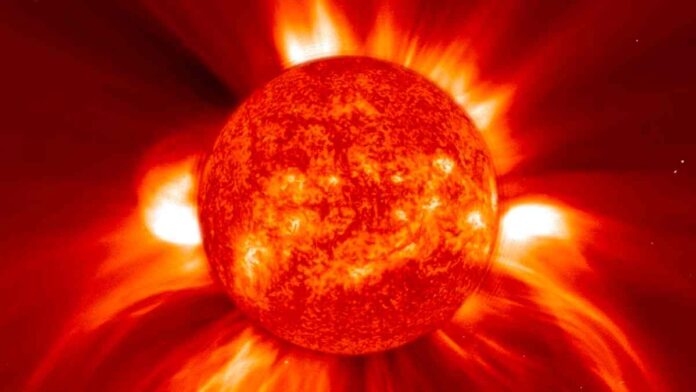It’s been about a week since the last solar storm struck the Earth. And it was a tiny storm that didn’t have much of an impact on us. The worst was felt over the Indian Ocean, where there was a brief radio blackout.
But things are about to take a turn for the worst. NASA has issued a severe solar storm warning for Earth. The initial strike is due tomorrow, April 19, with glancing hits, followed by a big direct hit on April 20. If this solar storm hits Earth, the consequences might be even more severe.
Tamitha Skov, also known as Space Weather Woman, is a scientist who studies space weather.
This solar storm is caused by a large coronal mass ejection (CME) cloud that is heading for Earth. Because the cloud is travelling in a crescent form, glancing strikes are predicted before a direct collision. However, even partial strike might have a negative impact. It can weaken the Earth’s magnetic fields enough to generate fissures, allowing a CME to escape into the upper atmosphere and trigger a far more violent storm.
In addition, Skov indicated in her weekly forecast that there is a 10% possibility of an X-class solar flare explosion on Sun. Such eruptions are the primary cause of shortwave radio outages and GPS disturbance. If such an eruption occurs and coincides in company of the solar storm, the total impact may become more difficult.
Today’s solar storm might be pretty frightening. It has the potential to disrupt GPS, slow down mobile networks and the internet, and even create a huge power outage by corrupting power systems. Even technological technologies on Earth are susceptible to failure.
Since 2010, NASA’s Solar Dynamics Observatory (SDO) has carried a full set of equipment to examine the Sun. It collects data from diverse solar activity using three critical devices. The Helioseismic and Magnetic Imager (HMI) measures the longitudinal and vector magnetic fields over the entire visible solar disc, the Extreme Ultraviolet Variability Experiment (EVE) measures the Sun’s extreme ultraviolet irradiance, and the Atmospheric Imaging Assembly (AIA) provides incessant full-disk annotations of the solar corona and chromosphere in seven EUV (extreme ultraviolet) channels.




